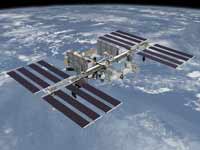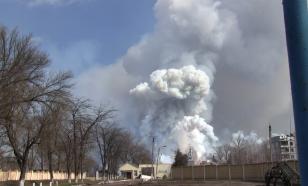International Space Station celebrates ten years of success
The International Space Station (ISS) received some sort of birth certificate in Washington on January 29, 1998. Russia, the USA, Canada, Japan and 17 members of the European Space Agency signed the agreement on building the ISS. That day another document was authorized – the Memorandum of Understanding between NASA and the Russian Space Agency that determined the partners’ rights and obligations and distributed the ISS resources according to the parties’ contribution.

In November of 1998 the Russian Proton booster launched the first module of the new station to the orbit – Zarya, a functional cargo block. In December the USA’s Endeavour delivered the Unity module. On December 6, 1998 all the elements were combined together. After the Rrussia’s Zvezda module was connected in July 26 of 2000, the ISS became ready to be inhabited. On October 31 the new station welcomed the first permanent expedition of Russian cosmonauts Yuri Gidzenko, Sergei Krikalev and American astronaut William Shepard. Since then 144 people from 14 countries have visited the station. While the station was developing, 15 major expeditions and 13 visiting expeditions were on board.
Two major space powers, Russia and the USA, were conducting orbital activities during the 1990s. In June of 1992 the two countries signed a pact on the cooperation in space exploration, which resulted in the Mir-Shuttle program. According to this program, American astronauts worked at the Mir, which was six years old already. There was a need to build a space station to replace the old orbital house. The USA came up with the project called Freedom, while Russian experts were building the Mir-2. But it turned out that neither of the countries could build a new orbital laboratory alone.
The Alfa project was unveiled afterwards, for which in 1995 the USA allocated $2.1 billion for seven years. Russia’s agreement to take part in the project influenced greatly the decision of the US Congress to fund the ISS. Then other participants joined in the project: Europe and Canada. By the way, the station was originally called Alfa, but Russia offered its own name – Atlant that displeased Americans.
The station was eventually called the International Space Station. It seems to have good prospects: it will probably operate up to 2020, though it was planned to be closed in 2010. It was decided to extend the term for another five years. The permanent crew was enlarged up to six people, as new modules were added to the station. According to the Director of Russia’s Energia Space Corporation, General Vitaly Lopota, the actual scientific experiments in the Russian segment of the ISS will start only in 2014, when the Russian scientific energy modules NEN-1 and NEN-2 are be delivered to the orbit. There will be nine Russian segments in total. Now 56 Russian tests are under way on board.
For the near future the Russian Space Agency plans the launch and installation of the docking compartment CO-2 in 2009; the manacle loading module in 2010, which provides the station with four docking ports and thus with the crew rotation beginning from March or April of 2009; the multipurpose laboratory module in 2011, which will enable the Russian segment to conduct greater experiments on the ISS.
Nezavisimaya Gazeta
Translated by Julia Bulygina
Pravda.ru
Subscribe to Pravda.Ru Telegram channel, Facebook, RSS!


